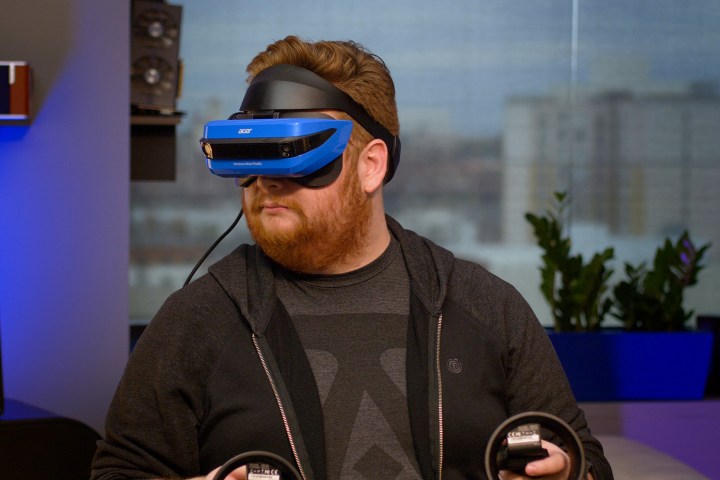
Windows Mixed Reality (WMR) headsets, such as Acer’s blue-painted option, are not setting the world on fire, at least when it comes to gamers. The latest Steam hardware survey shows that of the total number of virtual reality headset owners on the platform, WMR makes up just 5 percent. That’s a lower market share than it had a few months ago.
Although marketed as something new and blending both the real and virtual worlds, Windows Mixed Reality is, for now at least, a virtual reality platform — it’s just Microsoft’s interpretation of it. While we found early hardware passable, we’ve not come across a headset that really impressed us just yet. Apparently, our feelings are mirrored by the gaming community, which still unequivocably prefers existing standouts like the HTC Vive and Oculus Rift.
To the credit of Microsoft and its partners, WMR hardware did steal a portion of the VR market when they launched, notching up to above 5 percent in a couple of months after the platform debuted last year. However, those numbers have remained pretty stagnant, and lately they’ve even fallen, dropping around a third of a percent since the start of February.
In comparison, the HTC Vive and Oculus Rift have battled back and forth with one another with around 45 percent share a piece, though the Rift currently has a little more at 47.5 percent. Oculus also enjoys a slightly bolstered position in the market with just under two percent of all VR users still running the old DK2 developer headset from time to time.
All of the major VR headsets have been falling in price over the past six months, with the Rift now sitting at $400, the Vive at $500, and the PSVR at $210. Those prices will have helped them all remain competitive, though WMR hardware has fallen in price right along with them. Some headsets can now be found for close to $200, making it one of the more affordable VR platforms, but that doesn’t appear to have enticed Steam gamers to opt for it over the more established competition.
Perhaps what WMR needs, as MSPowerUser suggests, is a concerted push for the fledgling technology from Microsoft. If the software giant hopes that its new platform will catch on among the increasingly saturated VR space, it may need to.


